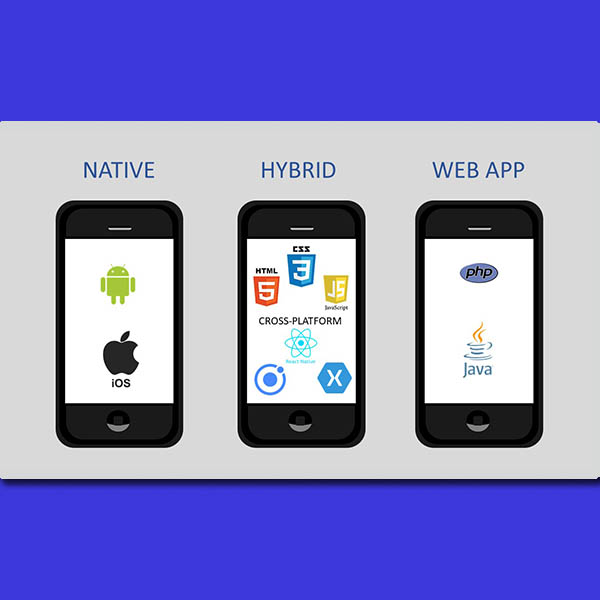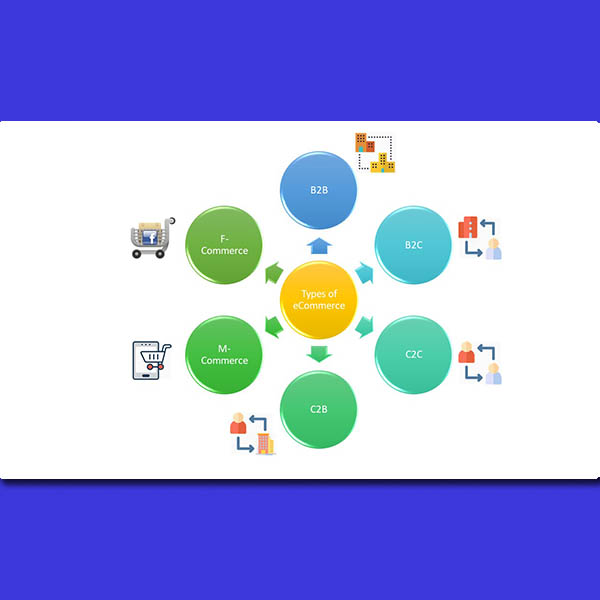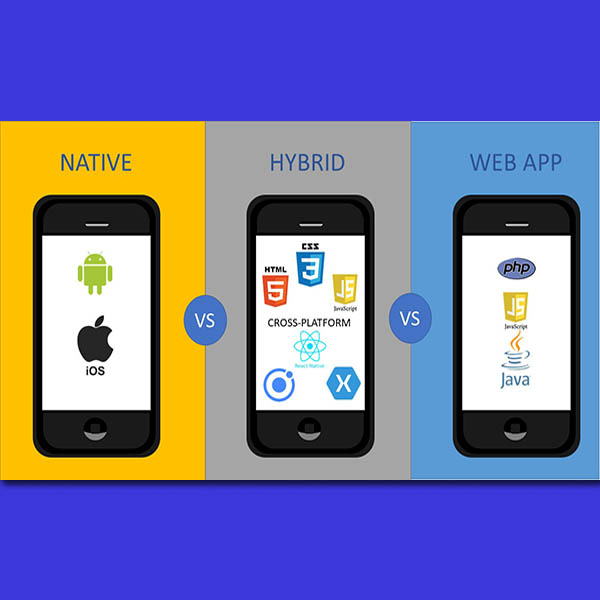
Types of Mobile App development : Native, Hybrid, Web App
Depending on your business objectives and overall product goals, this decision can make or break the success of your mobile strategy. Deciding to build your mobile product as either a web, native or hybrid app involves a variety of factors for consideration.
There are three main mobile app types you can explore for your mobile app development project: native, hybrid and web app. All three development paths hold intrinsic value, but which approach is right for your project?
Choosing how to build a mobile app, though, can have the most dramatic effect on the eventual cost, time, and success of a mobile project. This is second only to determining the scope and functionality of the app itself.
Native App Development
Native App is developed for a specific platform using platform-specific SDKs and development tools provided by the platform vendors. For example:
- For iOS, apps are built using Objective C or Swift in Apple’s XCode.
- For Android, apps are built using Java or Kotlin and Google’s Android SDKs.
The advantage of native apps is that they can get full access to device capabilities. As stated in an MGI Research study titled Buyer’s Guide for Mobile Enterprise Applications Platforms (MEAP),
“Native architecture tends to offer the richest, most graphically engaging user experience, high performance, and the ability to integrate with native device functions and backend enterprise systems.”
Native apps provide full access to the device’s hardware, such as its GPS sensor, contact list, camera, microphone, gyroscope, and accelerometer. These capabilities are essential for apps that require device data, like geographical location or device position/movement.
But these advantages come at the high cost of development and time as you’ve to build two similar applications for iOS and Android. Also, maintenance cost increases as developers have to maintain source code for two platforms.
Still, when maximum power is required, nothing beats native apps.
Essential skills: Objective-C or Swift for iOS, Java or Kotlin for Android, HTML/JavaScript Essential tools: XCode (for iOS), Eclipse (for Android)
Platform reach: Each app only reaches one platform
Sharable cross-platform codebase: 0% (No UI, No logic)
Pros:
- Complete access to device hardware, APIs
- Installable, can be app store deployed
- Maximum control over performance
- Powerful platform-specific development and debugging tools direct from platform vendors
Cons:
- Multiple implementations required to reach multiple platforms
- Multiple skill sets and programming languages
- Requires installation (and device provisioning if private deployment desired)
- New tools needed to manage app security, enforce data security policies
Hybrid App Development
Hybrid apps work across multiple platforms and behave like native apps. A hybrid app is essentially a combination of a native app and a web app. Although this type of app can be installed on a device like a native app, it technically is a web app. These types of apps are built with HTML, CSS, or JavaScript and run in a webview.
Hybrid app development is essentially a web app that incorporates additional native features. Including native features is possible when you deploy a wrapper to act as a bridge between platforms. A hybrid app consists of two parts:
- The backend code. Hybrid code is written in languages like HTML, CSS, or JavaScript.
- A native shell. This shell is downloadable and loads the code using a webview.
The hybrid approach allows the cross-platform development of mobile apps and thus the significantly reduces the development costs. That’s the main advantage of hybrid apps that developers can build mobile apps for both platforms with lower development cost and time.
The primary limit of hybrid apps is the speed and performance of the web container on each target device.
Essential skills: HTML, JavaScript, CSS, Hybrid container (such as Apache Cordova, PhoneGap)
Essential tools: Anything used for web development* + hybrid SDKs
Platform reach: Limited to reach of hybrid container, but most reach all major platforms
Sharable cross-platform codebase: Almost 100% (Some platform-specific UI may be desired)
Pros:
- Low learning curve for web developers
- Installed, can be app store deployed
- One code base for all platforms
- Easy to transition from web to hybrid development, reuse code
- Extensive access to device hardware, APIs
Cons:
- Performance limited by web’s capabilities
- Requires installation (and device provisioning if private deployment desired)
- New tools need to manage app security, enforce data security policies
Web App Development
A web app loads in browsers like Chrome, Safari, or Firefox, and doesn’t need to be downloaded from app stores like native mobile apps. Web apps also don’t take up storage on the user’s device.Unlike native apps, mobile web apps run on both platforms: Android and iOS. Also, they are accessible via the web and do not require installation on the devices.
Since mobile web apps are accessed through mobile browsers, it’s the fastest way to reach mobile users. Unlike native apps, you don’t have to build different apps for different platforms which ultimately save lots of development cost and time.
Users are easily frustrated with performance and usability issues like load times, small images, and network availability
Unlike native and hybrid apps, mobile web apps are limited to the features built-in to mobile browsers. Also, they are unable to access some of the device’s hardware, contact list and deliver push notifications.
Essential skills: HTML, JavaScript, CSS
Essential tools: Anything capable of developing web apps
Platform reach: iOS, Android, Windows Phone or any HTML5 capable mobile browser
Sharable cross-platform codebase: 100% (UI + Logic)
Pros:
- Familiar, very low developer learning curve
- Easy to deploy, no software installs
- Easy to share code with desktop websites
- Maximum reach
- Reuse existing security and software management solutions
- Open standards-based platform (no vendor lock-in)
Cons:
- Limited access to device hardware, APIs
- Poor offline support, requires “always on” Internet connection
- Unable to “install” on a device or publish via an app store
- Unable to match native performance for rich, animated interfaces
Comparison among Native, Hybrid and Web Apps read here.


